Unusual But Effective Cooking Methods
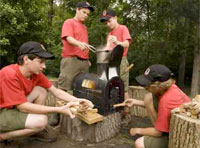 Who says camp food has to taste blah? With minimal effort, a troop of North Carolina Scouts has gotten creative with campfire cuisine to cook up mouth-watering entrees.
Who says camp food has to taste blah? With minimal effort, a troop of North Carolina Scouts has gotten creative with campfire cuisine to cook up mouth-watering entrees.
“We get a lot of stares when we’re at a camporee and start cooking fish over the campfire,” says 17-year-old Scout Jordan Mitchell, Troop 33, Charlotte, N.C. “I tell them fish over a fire tastes great and it’s really not hard to do after you’ve done it a few times.”
In Troop 33, the Scouts will starve before the leaders will cook for them.
“[Cooking]’s actually kind of fun,” insists 13-year-old Scout Hayden Hoffler, as he flips up the lid on a mailbox-turned-camping stove.
The Scouts in Troop 33 are practicing recipes used by Scouts for generations. But some of Troop 33’s recipes have a twist. For example, their mailbox stove lets them bake, simmer and even stay warm on windy days when campfires aren’t practical.
Here are some of the troop’s favorite recipes.
FISH ON A SKEWER
 Ingredients:
Ingredients:
Fresh fish, cleaned inside and out (trout, crappie, bluegill, perch, brim, catfish or bass)
About 1/4 cup olive oil
Juice from 1 lemon
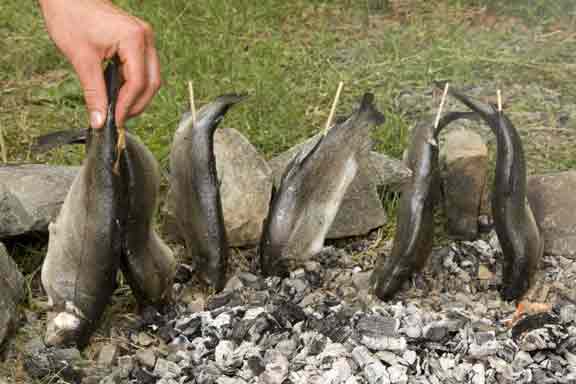 Salt and pepper
Salt and pepper
Dried parsley
Wooden skewers 12 inches long
Mix olive oil, lemon juice, salt, pepper and parsley together then brush on cleaned fish. Starting at the tail end, spear skewer through fish, with pointed end coming out through mouth.
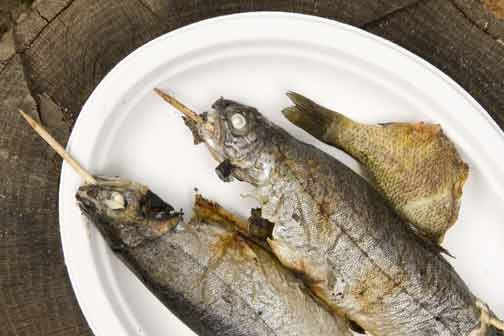 Place fish in coals (no flames) head first with tail sticking up straight. Cook for about 10 minutes until flaky (165 degrees).
Place fish in coals (no flames) head first with tail sticking up straight. Cook for about 10 minutes until flaky (165 degrees).
BANNOCK BREAD BAKED IN A MAILBOX
Ingredients:

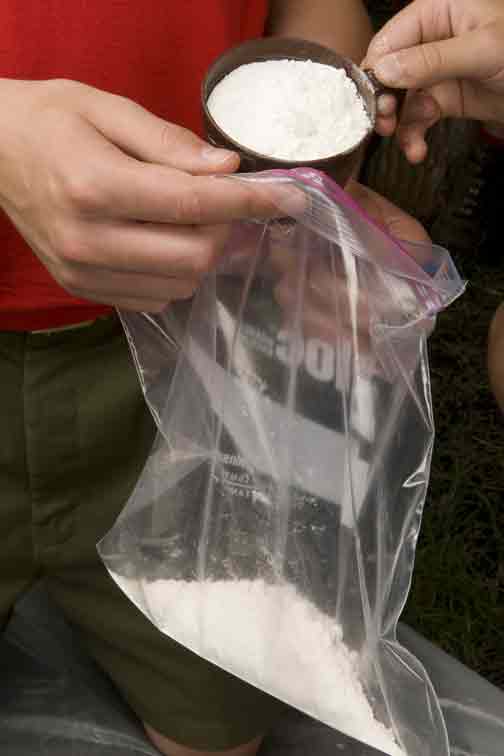 3 cups flour
3 cups flour
1 tablespoon baking powder
4 tablespoons sugar
3/4 teaspoon salt
Water
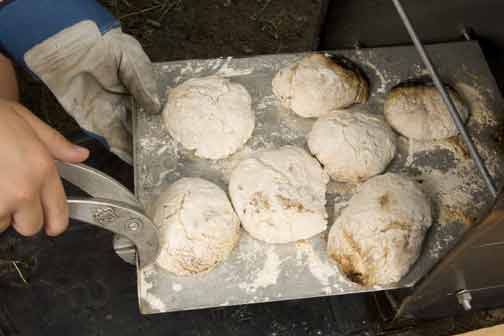
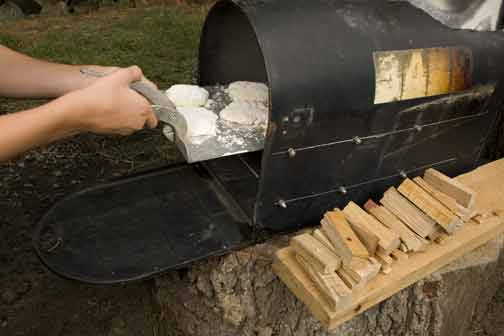 Mix dry ingredients in a gallon-size plastic bag. Stir in water gradually to form heavy dough that isn’t sticky.
Mix dry ingredients in a gallon-size plastic bag. Stir in water gradually to form heavy dough that isn’t sticky.
With floured hands, roll into balls and pat flat into biscuit-size cakes or “bannocks.” (You can also cook it as one large flat cake.) Coat with flour to prevent sticking. Bake in oven or pan until done.
MAILBOX STEW
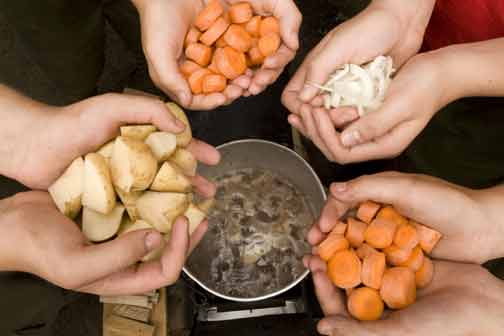
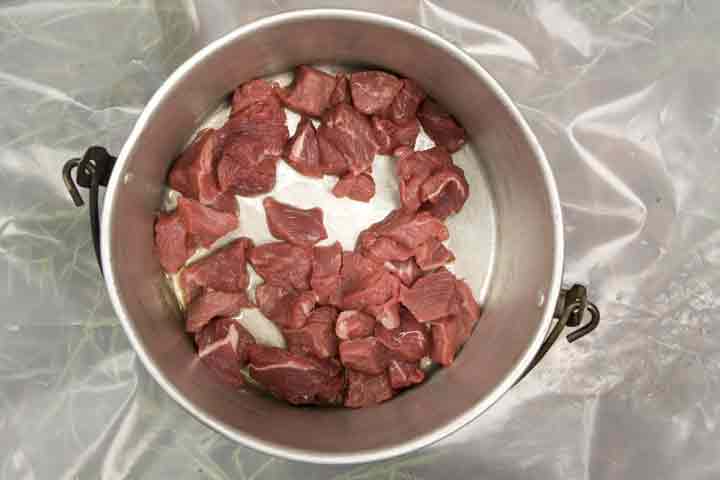 Ingredients:
Ingredients:
1/2 pound stew beef
1 tablespoon oil
3 carrots (not peeled)
2 potatoes (not peeled)
1 onion (diced)
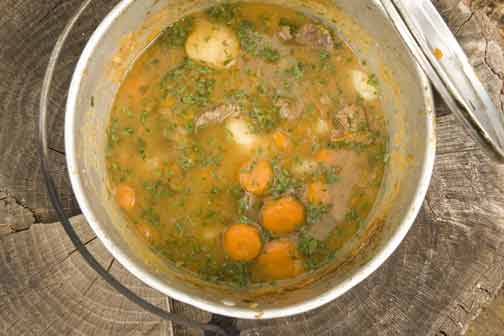
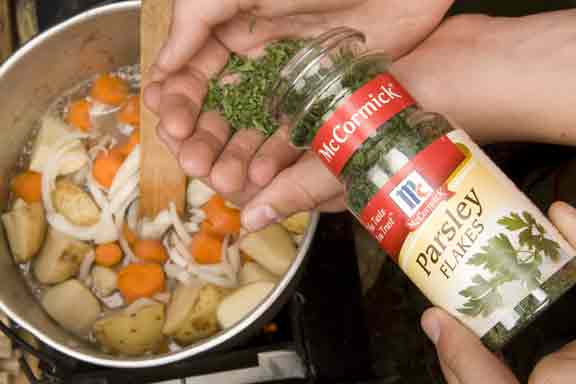 1/2 teaspoon salt
1/2 teaspoon salt
1/2 teaspoon pepper
2 teaspoons sugar
Parsley or dried parsley flakes
Cut beef into bite-size cubes. Brown beef in oil in bottom of two-quart pot. Add water to cover meat and simmer for 30 minutes. Chop vegetables (leaving potato and carrot unpeeled for extra vitamins and fiber) and add to pot. Add spices and additional water to cover vegetables. Simmer covered 1 to 2 hours until vegetables are cooked.
DINGLE STICK CHICKEN
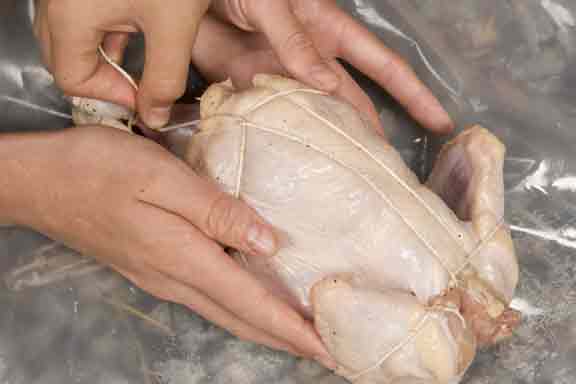
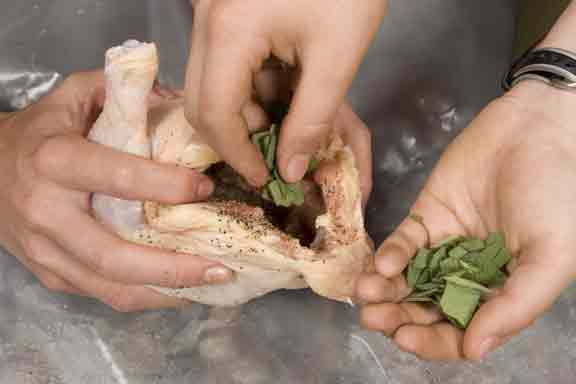 Ingredients:
Ingredients:
Whole chicken
Salt and pepper
Fresh sage (diced)
Heavy string (100 percent cotton)
Hardwood sticks (green) about 12 inches long with bark removed (Do not use soft wood or wood with sap.)
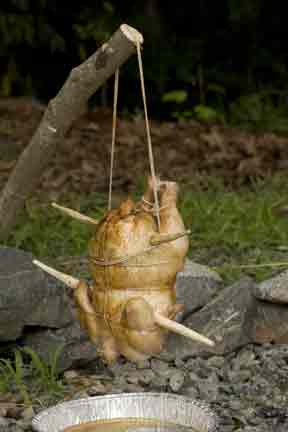
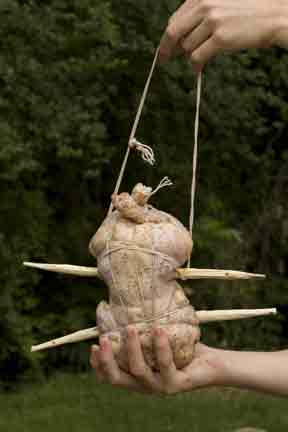 Season chicken inside with salt, pepper and diced sage. Tie chicken securely with string. Spear the chicken with sticks to help maneuver it while cooking. Using another long piece of string soaked in water, make a loop that wraps around the sticks and hang chicken from thick branch pounded into ground securely. Cook over coals, letting drippings fall into pan, which keeps drippings from creating flames. Occasionally, turn chicken end over end. Chicken is done when thermometer reads 165 to 170 degrees.
Season chicken inside with salt, pepper and diced sage. Tie chicken securely with string. Spear the chicken with sticks to help maneuver it while cooking. Using another long piece of string soaked in water, make a loop that wraps around the sticks and hang chicken from thick branch pounded into ground securely. Cook over coals, letting drippings fall into pan, which keeps drippings from creating flames. Occasionally, turn chicken end over end. Chicken is done when thermometer reads 165 to 170 degrees.
STONE CHICKEN
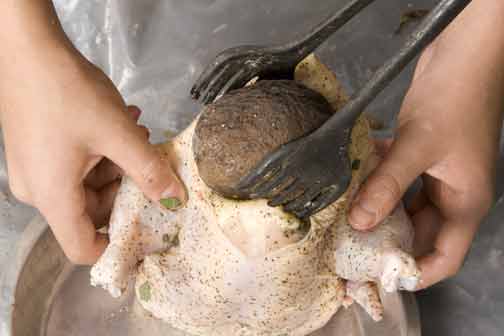
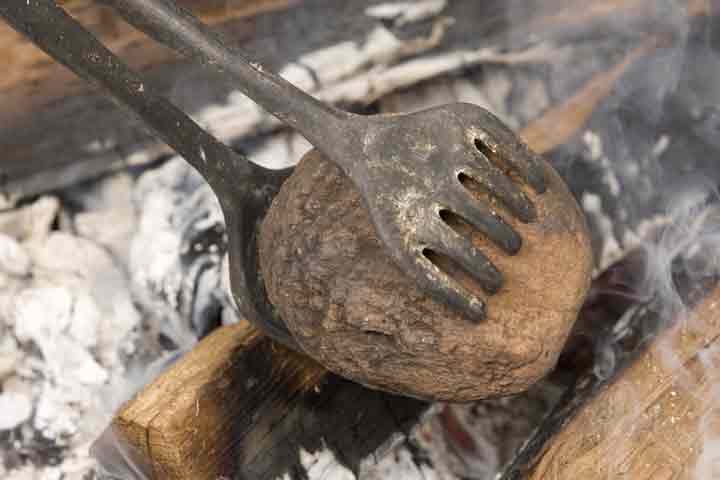 Ingredients
Ingredients
Whole chicken
Salt and pepper
Fresh sage (diced)
Heavy aluminum foil
1 large smooth river rock or 2 medium-size smooth rocks
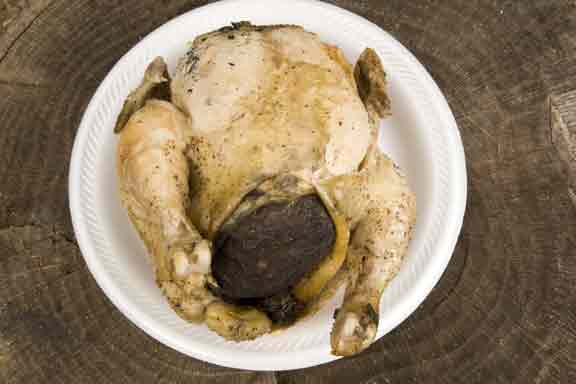
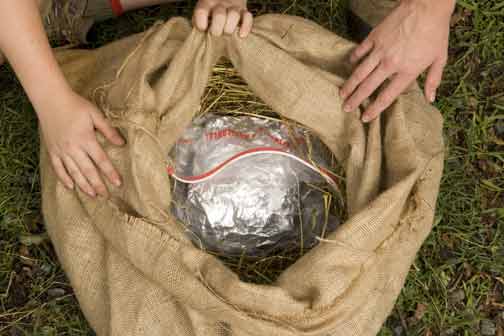
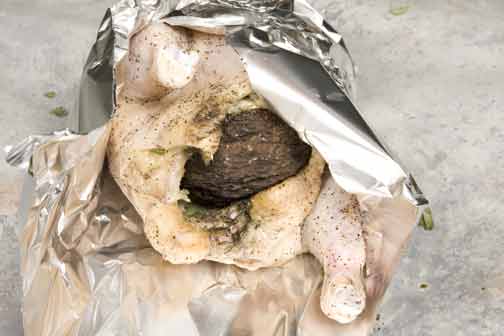 Clean stone(s) and place in fire. Make sure each stone is dry; residual moisture could result in popping rocks. Season chicken inside and out with salt, pepper and diced sage. Using tongs, place stone inside chicken. Wrap chicken tightly with foil. Place inside gallon-sized zippered bag (to catch juices). Place bagged chicken inside of a burlap bag filled with straw or dried grass or leaves (this acts as insulation). Tie burlap bag and let cook 5 to 6 hours. Chicken is done when thermometer reads 165 to 170 degrees. The burlap bag can be left to cook at your campsite or carried in a backpack. The stone cooks the chicken as you walk.
Clean stone(s) and place in fire. Make sure each stone is dry; residual moisture could result in popping rocks. Season chicken inside and out with salt, pepper and diced sage. Using tongs, place stone inside chicken. Wrap chicken tightly with foil. Place inside gallon-sized zippered bag (to catch juices). Place bagged chicken inside of a burlap bag filled with straw or dried grass or leaves (this acts as insulation). Tie burlap bag and let cook 5 to 6 hours. Chicken is done when thermometer reads 165 to 170 degrees. The burlap bag can be left to cook at your campsite or carried in a backpack. The stone cooks the chicken as you walk.
the name that they name this article “unusual cooking” that sounds offensive because it really works and also i might try that kind of cooking too so i don’t have to buy pots and pans from the market.
The Mail Box Oven reminds me of a story I heard about George Washington Carver when he was at Tuskeegee University. He took a wooden barrel, lined it inside with plaster (so it would not burn). Then he took a small table and cut a small hole in the ttop of the table. On top of the table he placed a couple of bricks to hold a pot of food. Next he put the barrel open end down on top of the table over the pot. Below the table right under the small hole he placed a lighted kerosene lamp. In a couple of hours he could cook a meal for the whole student body. Meat, potatoes, vegatables, soup and pie all cooked with perhaps a cup of kerosene for fuel.
how do you make the mailbox cooker i want to make them for my troop
That is so Cool HOW DO YOU MAKE IT?
Come on we all just want to know 1 thing
HOW DO YOU MAKE IT!!!!!!
Cool butt I whant to now how to make that. My troop would like that
I would also like details on the mailbox cooker. It looks like a fun item to make and use.
mailbox stove is a very cool addition to your troop gear, the recipes look great I look forward to sharing this with our troop. I would love to get directions to build the stove. I have searched net with out any luck.
I really want to know hom to make my own mailbox oven. Mabye it could get added to the projects provided by BL? Very cool idea!
Just one question, how did they make the “mailstove”. I’ve got a pretty good idea but i need details
me to